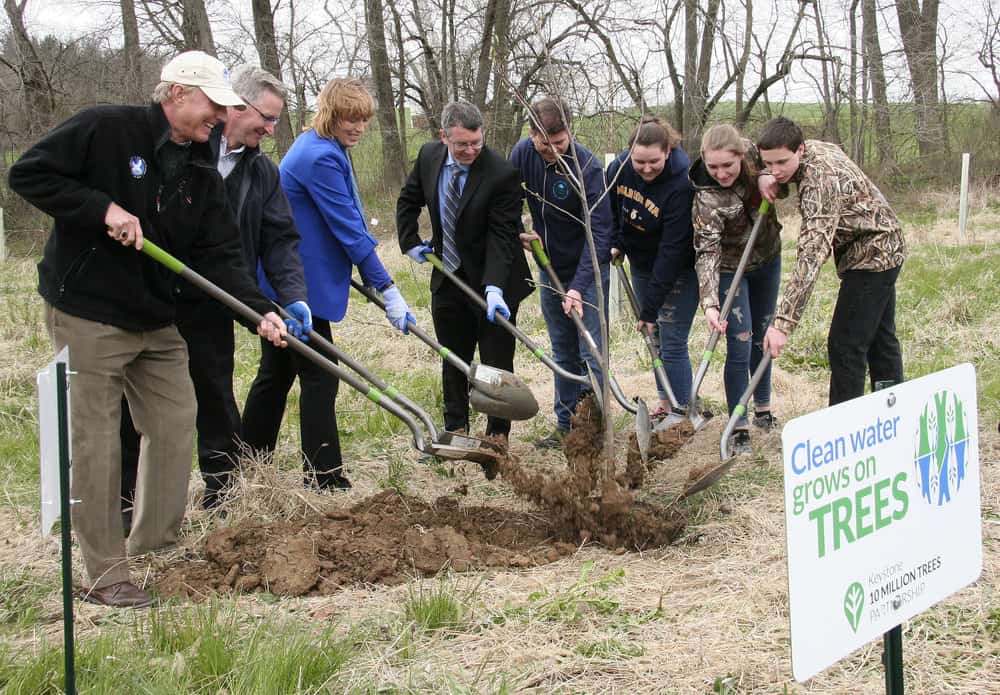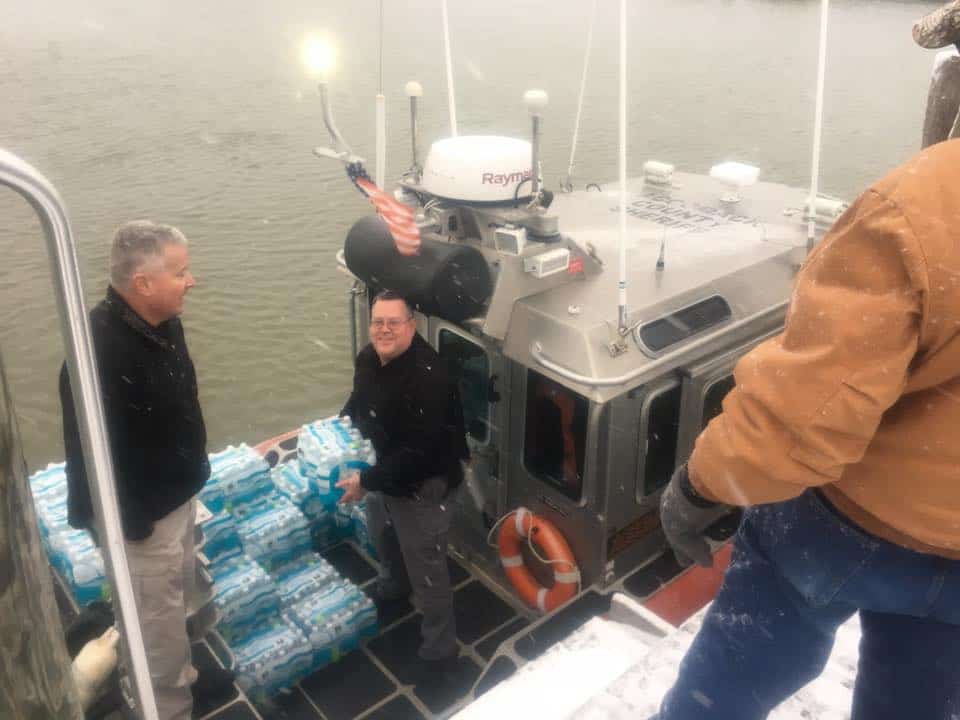Pennsylvania just took a big step in the quest for a cleaner Chesapeake Bay watershed by announcing its plan to plant 10 million trees by the end of 2025.
Helping to plant the first tree at the launch of the Keystone 10 Million Trees Partnership in Lancaster County Tuesday were, from left: Will Baker, President of the Chesapeake Bay Foundation; Russell Redding, Secretary of the PA Department of Agriculture; Cindy Adams Dunn, Secretary of the PA Department of Conservation and Natural Resources; Patrick McDonnell, Secretary of the PA Department of Environmental Protection; Cosmo Servidio, Environmental Protection Agency Administrator for Region III; joined by Penn Manor High School Future Farmers of America students Alyssa Chalfant, Alyssa Broderick, and Daniel Eshbach. Photo: CBFA group of local and state officials and conservationists recently met on a farm in Manheim, PA to announce the Keystone 10 Million Trees Partnership, which will be coordinated by The Chesapeake Bay Foundation (CBF). The collaboration includes a number of agencies, conservation and watershed groups, businesses, and individuals.
As part of its goal, Pennsylvania has pledged to plant more than 30,000 trees throughout the state before the end of the month.
Many of the state’s waterways, which feed the Chesapeake, are overloaded with pollution from stormwater and agricultural runoff. The CBF says that the Partnership will focus on plantings “in Lancaster County and four others in southcentral Pennsylvania. Those counties are critical because of the amount of nitrogen pollution generated and that local stream impairment and overall loss of trees along streams and streets is where greatest need meets greatest opportunity.”
Cindy Adams Dunn, Secretary of the Department of Conservation and Natural Resources (DCNR), says the benefits of planting trees will be widespread. “When we look at solutions for some of our conservation challenges such as managing stormwater from very heavy rain events, having clean drinking water, and providing habitat for fish and wildlife, it turns out that trees are the answer,” she says. “We are excited to work with the Chesapeake Bay Foundation and many other partners on this movement to plant trees along streams and in communities across Pennsylvania.”
To learn more about the Partnership and its members, click here.
-Laura Boycourt




